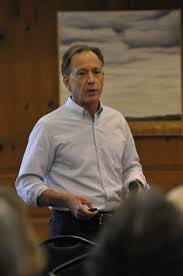teaching history
Select an item by clicking its checkbox
Many Islamicists, specialists in Islam, talk about the challenge of teaching Islam in a post-9/11 world, a world where the War on Terror (WOT), political chaos in the Middle East (exacerbated by the WOT), and global jihadi violence (which feeds off the WOT) dominates the news. Not surprisingly, this backdrop ...
I remember how dumbfounded I was the first time a student told me he had grown up believing Catholics were not Christian. He had never, moreover, heard of the Orthodox Church, the only form of Christianity recognized by most Muslims in the region I study, (Central Asia). This encounter proved ...

Minds on Fire: How Role-Immersion Games Transform College
Date Reviewed: June 16, 2015
Mark C. Carnes’s Minds on Fire: How Role-Immersion Games Transform College is the work of a true believer seeking the conversion of others to the path of right pedagogical practice. Fortunately, the approach he advocates, teaching history through month-long, immersive, student-led role-play, seems a worthy recipient of his impassioned testimony. I came to this book curious about contextualizing knowledge in the theological classroom, given the prohibitive expense and time commitment of many of the strategies currently used in theological education to achieve this goal (such as travel seminars, immersion, and community-engaged learning). As someone who has been frustrated by the inability of my school’s curriculum to excite students and engage them in the history of the development of religious traditions, I wondered if role-immersion games would be a useful tool in my setting.
Reflecting on the use of published games from the Reacting to the Past consortium, a group of which Carnes is the founder, Carnes describes in glowing terms the work that these role-plays can achieve in classrooms full of disengaged, unmotivated college students and instructors. He makes sweeping claims, such as: “Role-immersion games in higher education today hold the promise of restoring the churning passions and subversive impulses that have always invigorated the life of the mind” (297). Using interviews and other outcomes data with former participants and instructors to weave compelling narrative descriptions of the method in action, he makes a strong case for why immersive play increases critical thinking, community, empathy, leadership, and other qualities that most schools have in their mission statements but are often unclear about how they actually teach them. He also addresses critics who worry about letting amateur historians imagine their way into historical periods, explicitly tackling concerns about the probability of “getting it wrong” and why this is educative.
I appreciated Carnes’s depth analysis of two motivational vehicles for engaging historical material with critical passion: imagination and subversive play. While Carnes dismisses the luminaries of educational philosophy who would argue against role-play as a part of education, in one place lumping together “Plato, Freud, Dewey, Piaget, and Erikson” (295) as people who would hate this method, he unfortunately ignores the fine work of educational philosophers such as Elliott Eisner and Kieran Egan who have argued passionately for the role of imagination in education, and who would strengthen his argument tremendously.
As someone who teaches primarily adult students (average age 41) rather than traditional college-age undergraduates in private liberal arts institutions (the primary subjects in this text), I was less enthusiastic about Carnes’s reflection on how taking on roles in the first person led to training in leadership, imaginative empathy, and other skills often already present in adult students. Descriptions of class starting before the assigned time and running late in the evenings and on weekends in residential dorms was also troubling, as the heavily scheduled lives of nonresidential adult students who also have jobs, families, and caregiving responsibilities would not lend themselves to this sort of educational strategy. The amount of time and intellectual commitment necessary to succeed in the games also causes Carnes to admit the inability of the Reacting teaching mode to become the single mode of instruction in an institution, “if only because no student wants to play more than one Reacting game at a time” (291). Additionally, Carnes’s detailed reporting of making African-American students argue for slavery in their roles without addressing the ethical implications of such imaginative ventures seemed inappropriate.
I was intrigued by Carnes’s very exciting hint at transforming this mode of pedagogical instruction through collaboration with the world of immersive video gaming, and would welcome this innovation as a strategy in online teaching and learning. If you are interested in this topic, initially explore www.barnard.edu/reacting and the role-plays and teaching resources available through W.W. Norton and The Reacting Consortium Press. If you are intrigued but wary, Carnes’s book may be the motivation you need to invest in learning more about the method and trying it on for size in your setting.
When I signed up to teach the Bible and Race in the USA, I didn’t know that my students would be able to live stream the lynching of Eric Garner and Tamir Rice. No one told me that modern courtrooms would accept a testimony from one who could liken ...


